|
|
|
 |
 |

 |
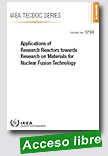 |
Applications of Research Reactors towards Research on Materials for Nuclear Fusion Technology
IAEA TECDOC, 2013, 142 p.
Controlled nuclear fusion is widely considered to represent a nearly unlimited source of energy. Recent progress in the quest for fusion energy includes the design and current construction of the International Thermonuclear Experimental Reactor (ITER), for which a licence has recently been obtained as a first of its kind fusion nuclear installation. ITER is designed to demonstrate the scientific and technological feasibility of fusion energy production in excess of 500 MW for several consecutive |
minutes. ITER, however, will not be able to address all the nuclear fusion technology issues associated with the design, construction and operation of a commercial fusion power plant. The demonstration of an adequate tritium or fuel breeding ratio, as well as the development, characterization and testing of structural and functional materials in an integrated nuclear fusion environment, are examples of issues for which ITER is unable to deliver complete answers. To fill this
knowledge gap, several facilities are being discussed, such as the International Fusion Materials Irradiation Facility and, eventually, a fusion demonstration power plant (DEMO).
However, for these facilities, a vast body of preliminary research remains to be performed, for instance, concerning the preselection and testing of suitable materials able to withstand the high temperature and pressure, and intense radiation environment of a fusion reactor. Given their capacity for material testing in terms of available intense neutron fluxes, dedicated irradiation facilities and post-irradiation examination laboratories, high flux research reactors or material test reactors (MTRs) will play an indispensable role in the development of fusion technology. Moreover, research reactors have already achieved an esteemed legacy in the understanding of material properties and behaviour, and the knowledge gained from experiments in fission materials in certain cases can be applied to fusion systems, particularly those of materials under development for Generation IV concepts.
Extraído de: http://www-pub.iaea.org/MTCD/Publications/PDF/TE-1724_web.pdf
|
 |
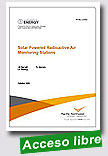 |
Solar Powered Radioactive Air Monitoring Stations
Pacific Northwest National Laboratory, October 2013, 46 p.
Environmental monitoring of ambient air for radioactive material is required as stipulated in the PNNL Site radioactive air license. Sampling ambient air at identified preferred locations could not be initially accomplished because utilities were not readily available. Therefore, solar powered environmental monitoring systems were considered as a possible option. PNNL purchased two 24-V DC solar powered environmental monitoring systems which consisted of solar panels, battery banks, and sampling units. During an approximate four month |
iperformance evaluation period, the solar stations operated satisfactorily at an on-site test location. They were subsequently relocated to their preferred locations in June 2012 where they continue to function adequately under the conditions found in Richland, Washington.
Extraído de:
http://www.pnnl.gov/main/publications/external/technical_reports/PNNL-22900.pdf
|
 |
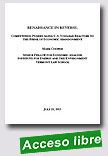 |
Renaissance in Reverse: Competition Pushes Aging U.S. Nuclear Reactors to the Brink of Economic Abandonment
Vermont Law School, July 18, 2013, 47 p.
Although Wall Street analysts expressed concerns about the economic viability of the aging nuclear fleet in the U.S., the recent early retirements of four nuclear reactors has sent a shock wave through the industry. One purely economic retirement (Kewaunee, 1 reactor) and three based on the excessive cost of repairs (Crystal River, 1 reactor, and San Onofre, 2 reactors), in |
addition to the cancellation of five large uprates (Prairie Island, 1 reactor, LaSalle, 2 reactors, and Limerick, 2 rectors), four by the nation’s large nuclear utility, suggest a broad range of operational and economic problems.
Extraído de:
http://www.vermontlaw.edu/Academics/Environmental_Law_
Center/Institutes_and_Initiatives/News.htm |
 |
 |
A transportable nuclear power plant (TNPP) is a factory manufactured, transportable and relocatable nuclear power plant which, when fuelled, is capable of producing final energy products such as electricity and heat. Introducing a TNPP may require fewer financial and human resources from the host State. However, the deployment of such reactors will face new legal issues in the international context which need to be
|
resolved to enable the deployment of such reactors in countries other than the country of origin.
The objective of this report is to study the legal and institutional issues for the deployment of TNPPs, to reveal challenges that might be faced in their deployment, and to outline pathways for resolution of the identified issues and challenges in the short and long terms. It is addressed to senior legal, regulatory and technical officers in Member States planning to embark on a nuclear power programme or to expand an existing one by considering the introduction of a TNPP.
Extraído de:
http://www-pub.iaea.org/MTCD/Publications/PDF/Pub1624_web.pdf
|
 |
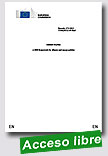 |
Green Paper - A 2030 framework for climate and energy policies
European Commission, March 27, 2013, 16 p.
The aim of this Green Paper is to consult stakeholders to obtain evidence and views to support the development of the 2030 framework. It begins with an overview of the current framework and what has been achieved and then presents the issues where stakeholder input is sought. In parallel, the Commission is consulting on issues relating to the international negotiations of a new legally binding agreement for climate action as well its policy to enable the demonstration of the carbon capture and storage technology.
|
Extraído de:
http://eur-lex.europa.eu/LexUriServ/LexUriServ.do?uri=COM:2013:0169:FIN:EN:PDF
|
 |
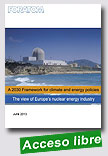 |
Nuclear Power: Analysis of Regional Differences and Improved Access to Information Could Strengthen NRC Oversight
Government Accountability Office (GAO-US), September 27, 2013, 102 p.
Following the launch by the European Commission (EC) in December 2010 of a public consultation for the preparation of its Energy 2050 Roadmap1, FORATOM contributed actively to the energy debate in February 20112. It contributed again in October 2011, when it gave its assessment of the initial consequences
|
of the accident that occurred at the Fukushima nuclear power plant3.
The present Policy Paper represents FORATOM’s latest contribution to the debate. It has been written in light of the EC’s recently published Green Paper entitled: A 2030 framework for climate and energy policies4, and in response to the associated public consultation.
Extraído de:
http://www.foratom.org/jsmallfib_top/Publications/FORATOM_Policy_Paper2013.pdf
|
 |

|
Inspection Protocols for Medical Linear Accelerators
Conference of Radiation Control Program Directors, Inc. (CRCPD), June 2013, 18 p.
The Conference of Radiation Control Program Directors, Inc. (CRCPD) is an organization made up of the radiation control programs in each of the 50 states, the District of Columbia, and Puerto Rico, and of individuals, regardless of employer affiliation, with an interest in radiation protection. The primary purpose and goal of CRCPD is to assist its members in their efforts to protect the public, radiation worker, and patient from unnecessary radiation exposure. CRCPD also provides a forum
|
for centralized communication on radiation protection matters between the states and the federal government, and between the individual states. One method of providing assistance to the states, as well as to other interested parties, is through technical and administrative publications. Most technical publications of CRCPD are written by various committees, task forces or special working groups. Most administrative publications are written by staff of the Office of Executive Director (OED). CRCPD's mission is "to promote consistency in addressing and resolving radiation protection issues, to encourage high standards of quality in radiation protection programs, and to provide leadership in radiation safety and education."
This particular publication, Inspection Protocol for Medical Linear Accelerators, contains inspection protocols developed by CRCPD’s H-40 Task Force on the Inspection Protocol for Radiation Machine Based Therapy Treatments. This document is intended to provide guidance for state inspectors who conduct inspections of medical facilities that utilize one or more megavoltage therapeutic radiation machines which are subject to Part X of the Suggested State Regulations for the Control of Radiation (SSRCR). However, the varied complexity, configurations and functionality of these megavoltage therapeutic radiation machines makes it very difficult to develop a “one size fits all” inspection guidance document. Consequently, this document will focus primarily on common inspection elements and will not fully address some of the unique issues associated with specialized equipment such as CyberKnife and Tomotherapy units. However, Appendix A does include reference material which may be used by states that need to develop their own inspection protocols for these categories of therapeutic radiation machines.
Extraído de:
http://www.crcpd.org/Pubs/Protocols/H40_Medical_
Linac_Inspection_ProtocolFinal.pdf
|
 |
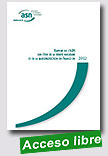 |
Rapport de l'ASN sur l'état de la sûreté nucléaire et la radioprotection en France en 2012
L’Autorité de Sûreté Nucléaire, 16/04/13, 42 p.
2012 a constitué une année importante pour le développement de la sûreté nucléaire en France. À la suite de l’accident de Fukushima, l’ASN a en effet prescrit aux exploitants des mesures d’amélioration de la robustesse des installations nucléaires avec un calendrier contraignant de mise en œuvre.
2012 a été caractérisée en termes de radioprotection par la poursuite des efforts engagés depuis plusieurs années pour maîtriser les risques liés à l’utilisation des rayonnements |
ionisants dans le secteur médical. L’accident majeur de radiothérapie d’Épinal révélé en 2006 et son procès en 2012 nous rappellent douloureusement l’importance des enjeux dans ce domaine.
L’ASN considère qu’en 2012 l’état de la sûreté nucléaire et de la radioprotection est resté globalement assez satisfaisant en France. L’ASN souligne pourtant la nécessité de poursuivre sur la voie de l’amélioration permanente de la sûreté nucléaire et de la radioprotection, qui passe par des efforts accrus des exploitants et des contrôles renforcés.
Extraído de:
http://www.asn.fr/index.php/S-informer/Publications/La-surete-nucleaire-et-la-radioprotection-en-France-en-2012
|
 |
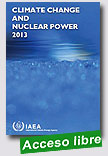 |
Climate Change and Nuclear Power 2013
IAEA, 2013, 114 p.
Climate change is one of the most important issues facing the world today. Nuclear power can make an important contribution to reducing greenhouse gas emissions while delivering energy in the increasingly large quantities needed for global socioeconomic development.
Nuclear power plants produce virtually no greenhouse gas emissions or air pollutants during their operation and only very low emissions over their entire life cycle. The accident at the Fukushima Daiichi nuclear power plant of March 2011 caused
|
deep public anxiety and raised fundamental questions about the future of nuclear energy throughout the world. It was a wake-up call for everyone involved in nuclear power — a reminder that safety can never be taken for granted. yet, in the wake of the accident, it is clear that nuclear energy will remain an important option for many countries. Its advantages in terms of climate change mitigation are an important reason why many countries intend to introduce nuclear power
in the coming decades, or to expand existing programmes. All countries have the right to use nuclear technology for peaceful purposes, as well as the responsibility to do so safely and securely.
This report has been substantially revised, updated and extended since the 2012 edition. It summarizes the potential role of nuclear power in mitigating global climate change and its contribution to other development and environmental challenges. The report also examines broader issues relevant to the climate change–nuclear energy nexus, such as cost, safety, waste management and non-proliferation. New developments in resource supply, innovative reactor technologies and related fuel cycles are also presented.
Extraído de: http://www-pub.iaea.org/MTCD/Publications/PDF/Pub_Climate-Change-NP-2013_web.pdf
|
 |
|

|
Nuclear Fuel Cycle Objectives
IAEA Nuclear Energy Series, 2013, 34 p.
This publication establishes the criteria that need to be fulfilled in order to satisfy the Nuclear Energy Basic Principles in the area of the nuclear fuel cycle for each of the following topics: Resources; Fuel engineering and performance; Spent fuel management and reprocessing; Fuel cycles; Research reactors: Nuclear fuel cycle.
These five sets of criteria are known collectively as ‘nuclear fuel cycle objectives’.
|
Extraído de:
http://www-pub.iaea.org/MTCD/Publications/PDF/Pub1622_web.pdf
|
| |
|
|
| |
| |
|
|
|
| |
|
|
|
| |
|
|
|
| |
|
|
|
|
|
